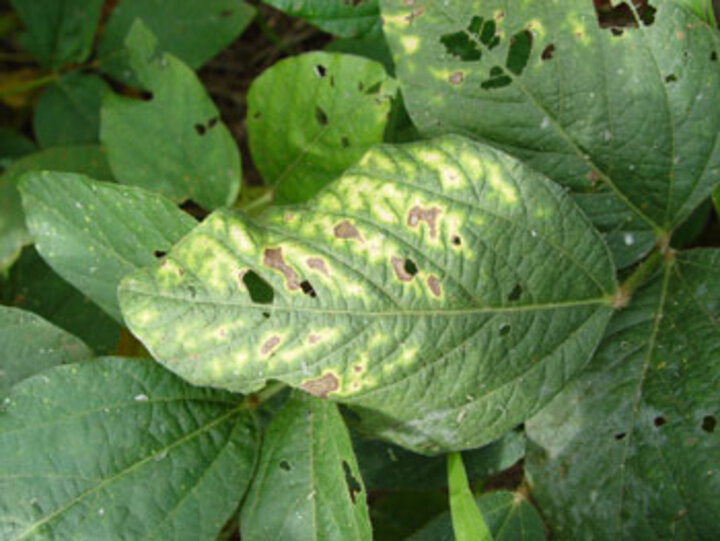August 21, 2009

|
| Leaf damage from sudden death syndrome. |

|
| Root damge from sudden death syndrome. |
Sudden Death Syndrome (SDS) has been found in many fields in Nebraska over the last two weeks. So far this year we have confirmed it in Hall, Seward, Jefferson, Gage, Kearney, and Platte counties and there are many others areas where the disease likely is present, based on calls the past week. This distribution is based on samples submitted to the UNL Plant and Pest Diagnostic Clinic to date.
This outbreak appears to be more widespread than in any year since it was first confirmed in Nebraska in 2004. Most affected fields have small areas with the disease and large areas are not being impacted.
Sudden Death Syndrome of soybean is caused by the fungus Fusarium solani f. sp. glycines. This is a different fungus than the one which caused early season damping off problems associated with soybean stand.The weather pattern we have had this year is very conducive to SDS as we had moisture early season and at the early reproductive stages.In addition, many producers are adapting earlier planting strategies which favor SDS development. Soil compaction and high fertility levels also have been associated with increased levels of SDS.
The foliar symptoms start with interveinal necrosis and the spots coalesce to form brown streaks between the leaf veins with yellow margins. Leaves eventually drop and the petiole (leaf stem) remains attached. The root system will have a deteriorated tap-root and lateral roots will only be evident in the upper soil profile.The root cortex is light-gray to brown and may extend up the stem. Typically, plants can be easily pulled and there will be a dark blue fungal growth on the roots. The blue color will not be evident in dry soil conditions.
At this time SDS appears to be widespread in Nebraska, but it can be effectively managed. If you have a large area of the field affected, avoid early planting and use resistant varieties. Thus far, seed treatment has not been shown to be effective.
Loren Giesler
Extension Plant Pathologist
